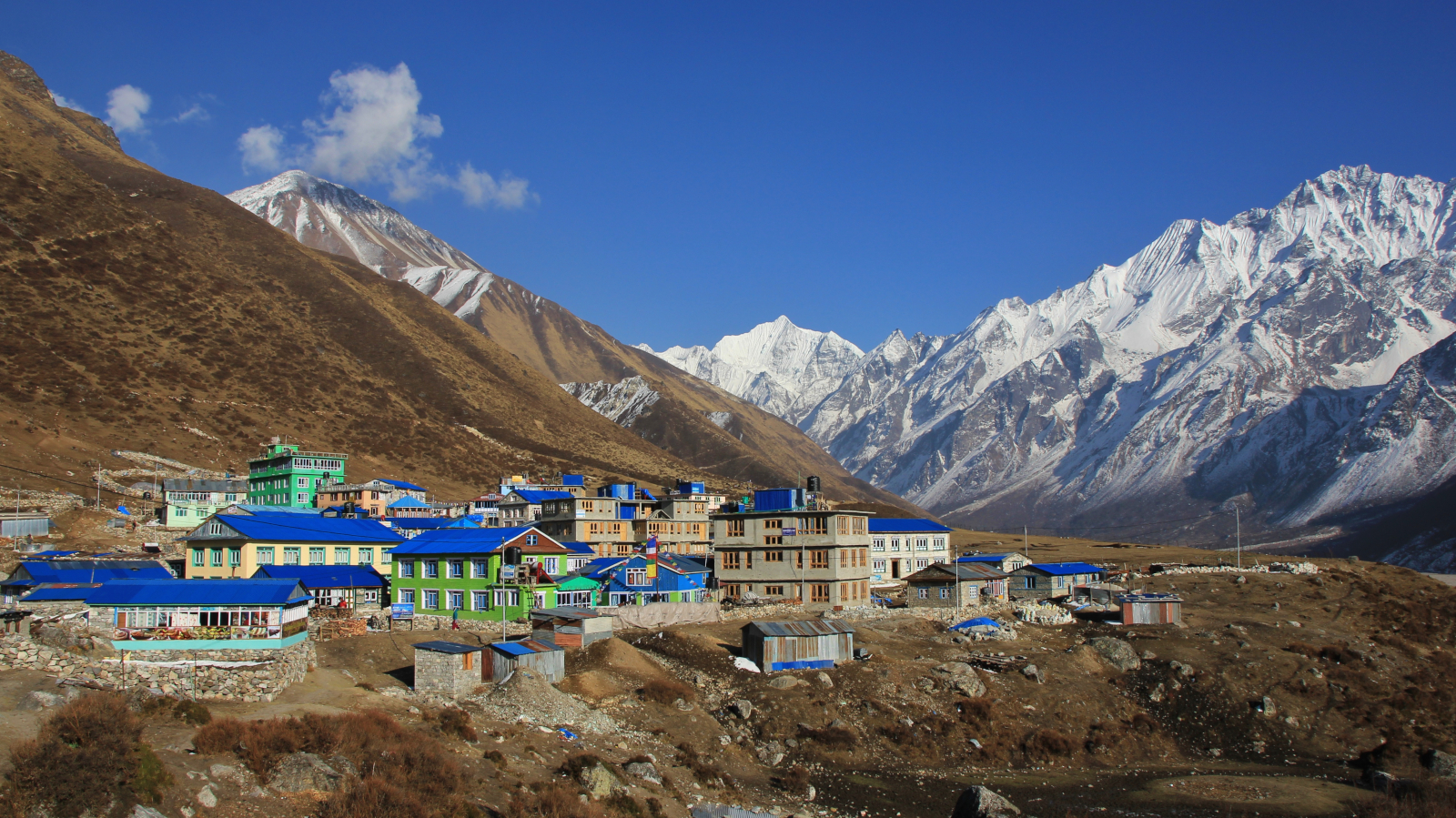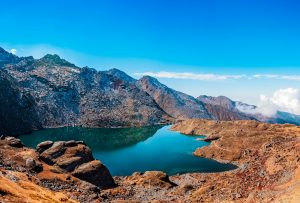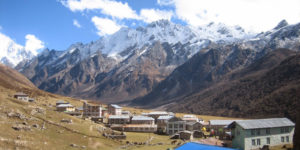Best Time for Langtang Valley Trek
October 16, 2024 admin

Best Time for Langtang Valley Trek: A Complete Guide to Seasons, Highlights & Insider Tips
If you’re planning a trek to the breathtaking Langtang Valley in Nepal, knowing the best time to trek is crucial to make the most of your adventure. The valley offers something unique in every season—from vibrant blossoms and clear skies to snow-covered landscapes and fewer crowds. In this guide, we’ll walk you through the best seasons for Langtang Valley trekking, the weather conditions, highlights of each season, and tips to prepare for an unforgettable experience.
What Makes Langtang Valley Special?

Langtang Valley, nestled north of Kathmandu, is a trekker’s paradise. Known for its rugged beauty, it combines jaw-dropping mountain views, pristine nature, and deep-rooted cultural experiences. You’ll pass through Tamang villages where the local culture reflects Tibetan Buddhist traditions, and walk along diverse landscapes, from forests to alpine meadows. It’s an ideal trek for those seeking both adventure and cultural immersion.
Read More: Langtang Trekking
When Is the Best Time for the Langtang Valley Trek?

Langtang Valley is accessible year-round, but the best times for trekking are Spring (March-May) and Autumn (September-November). These seasons offer the perfect balance of ideal weather, clear views, and easier trekking conditions. However, other seasons also have their charm, depending on what you’re looking for.
1. Spring (March to May): A Blooming Paradise
Spring is widely regarded as one of the best times for trekking in Langtang Valley. The winter snows begin to melt, unveiling lush green landscapes, colorful flowers, and cascading waterfalls. Temperatures are mild, and the weather is mostly stable, making for comfortable trekking.
Highlights of Spring in Langtang:
- Rhododendron Forests in Bloom: The trails are lined with vibrant red, pink, and white rhododendron flowers, creating stunning scenery.
- Wildlife Encounters: You have a chance to spot Himalayan wildlife like the red panda, langur monkeys, and various bird species.
- Moderate Weather: With daytime temperatures between 10°C and 20°C (50°F to 68°F), the conditions are perfect for trekking.
Challenges:
- Busy Trails: Spring is popular with trekkers, so expect more people on the trails and limited accommodation options.
- Muddy Paths: As snow melts, some parts of the trail can be muddy and slippery.
Pro Tip: To beat the crowds, start your trekking days early and book your accommodation in advance, especially during peak months like April.
2. Autumn (September to November): Crystal-Clear Views and Cultural Festivals
If you want clear skies and the best mountain views, autumn is your season. After the summer monsoon rains, the air becomes fresh and clean, offering the perfect backdrop for panoramic views of the Langtang mountain range.
Why Choose Autumn for Your Langtang Trek:
- Uninterrupted Mountain Views: The skies are clear, and you’ll get stunning views of peaks like Langtang Lirung and Dorje Lakpa.
- Pleasant Temperatures: The weather is mild, ranging from 15°C to 20°C (59°F to 68°F) during the day, perfect for trekking.
- Cultural Richness: Autumn is festival season in Nepal. Experience local traditions during the Dashain and Tihar festivals.
Challenges:
- Crowded Trails: Autumn is another peak season, so trails can get crowded, and accommodations may book up quickly.
Pro Tip: Make sure to secure permits and accommodation in advance, and pack light layers as temperatures can drop quickly in the evenings.
3. Summer/Monsoon (June to August): A Quiet, Green Wonderland
Though summer is the monsoon season, it’s still possible to trek Langtang Valley. This season is often overlooked, but for those seeking solitude, it offers a unique experience.
What Makes Summer Special:
- Lush Greenery: The valley comes alive with lush, green landscapes, thanks to the monsoon rains.
- Quieter Trails: With fewer trekkers on the route, you’ll enjoy more solitude.
- Cultural Festivals: Experience the Tarna festival and Janai Purnima, where you can immerse yourself in local traditions.
Challenges:
- Rain and Mud: Expect frequent rain showers, muddy trails, and leeches, particularly at lower altitudes.
- Landslides: In some areas, the risk of landslides increases, so caution is advised.
Pro Tip: Pack waterproof gear, including rain jackets and leech socks. Also, consider hiring a local guide to help navigate tricky areas.
4. Winter (December to February): A Snowy Adventure
For the adventurous trekker, winter offers a completely different side of Langtang Valley. The region turns into a snow-covered wonderland, and although the trails are quieter, the challenges increase.
Why Trek in Winter:
- Stunning Snowy Views: Winter offers clear skies and incredible views of snow-covered peaks.
- Less Crowded Trails: With fewer trekkers on the route, you’ll enjoy a peaceful, serene experience.
- Wildlife Spotting: Keep your eyes peeled for Himalayan wildlife, including the elusive snow leopard.
Challenges:
- Freezing Temperatures: Temperatures can drop below -10°C (14°F) at night in higher altitudes.
- Limited Accommodations: Some teahouses close for the season, so availability may be an issue.
Pro Tip: Bring warm, moisture-wicking layers and invest in high-quality trekking boots and crampons for walking on ice. Make sure your sleeping bag is rated for sub-zero temperatures.
Read More: Langtang Region
Final Thoughts: Choosing the Best Time for Your Langtang Valley Trek
No matter when you decide to trek, Langtang Valley promises breathtaking landscapes and cultural richness. Spring offers blooming flowers, autumn provides crisp views and festivals, summer brings quiet trails and lush scenery, while winter rewards the adventurous with snow-covered vistas and peaceful solitude.
The best time for you depends on your preferences and what you seek from the experience. Whether it’s the cultural richness of festivals, the peace of off-season trekking, or the dazzling natural beauty of spring and autumn, Langtang Valley never disappoints.
For personalized itineraries or more information on planning your trek, feel free to visit Luxury Holiday Trek or reach out at info@luxuryholidaytreks.com!
FAQs
1) How difficult is the Langtang Valley Trek?
The trek is considered moderately difficult due to high altitudes and steep sections. However, with proper preparation, even beginners can complete it.
2)How long does the Langtang Valley Trek take?
It typically takes between 7 to 10 days, covering about 77 km (48 miles).
3) What is the highest point of the Langtang Valley Trek?
The highest point is Kyanjin Ri, sitting at an elevation of 4,773 meters (15,655 feet).
4)Which month is best for Langtang Trek?
April and October are generally the best months for trekking, with ideal weather and stunning views.










